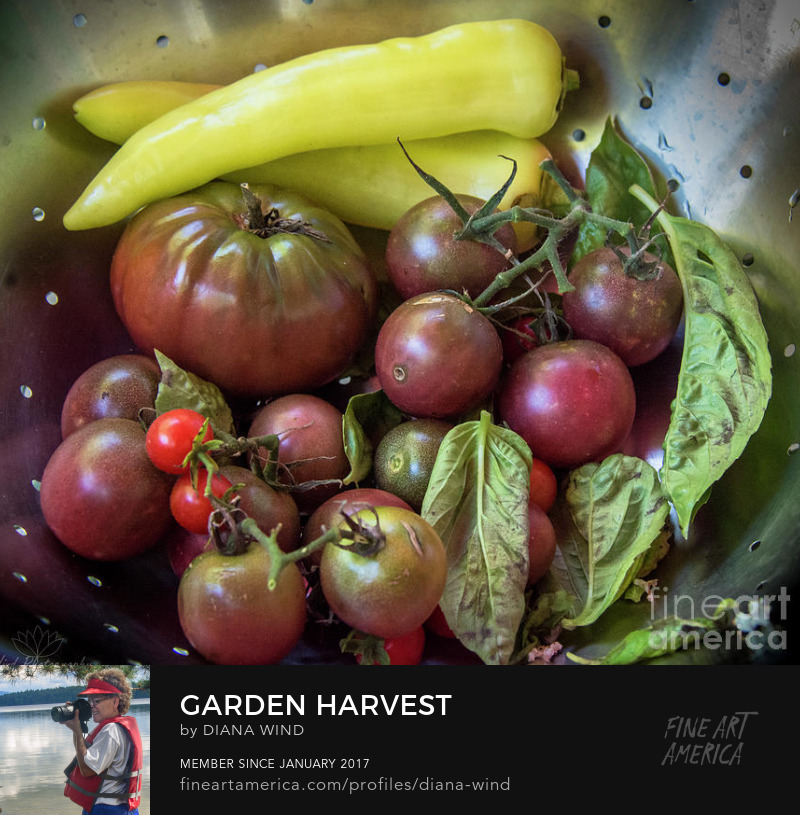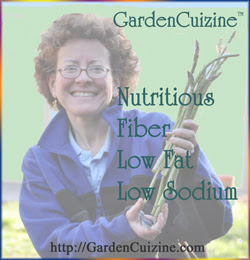Home harvested or farm fresh whole organic potatoes make delicious mashed or smashed (with skins) potatoes. We savor and save our homegrown potatoes for rosemary roasted potatoes, home-fries for special breakfasts and brunches, or scalloped potatoes for dinners. When we make mashed potatoes, for convenience and speed, we often whip up instant 100% real potatoes.
If you have the time, and don't want to use instant potatoes, make them from scratch. You could also mix instant with homemade. I've seen chefs do that in commercial kitchens, depending on the restaurant. It's your preference.
Reduce Sodium and Fat
In general, a good rule of thumb for healthy individuals is to avoid consuming excess sodium and fat. The USDA Dietary Guidelines for Americans recommends consuming less than 2,300 mg of sodium a day and less than 1,500 mg of sodium per day for those with or at risk for high blood pressure. The American Heart Association would like to see everyone consume less than 1,500 mg TOTAL sodium per day.
To put sodium content in perspective, the average American consumes over 3,400 mg of sodium a day. Just one McDonald's Quarter Pounder® with cheese contains 1,660 mg of sodium. Their Angus Bacon and Cheese has 2,540 mg, McRib® 980 mg, 10 pc Chicken McNuggets® 900 mg; even an EggMcMuffin® has 1,050 mg of sodium. If you're thinking, "But I don't eat at McDonald's?" Sodium can add up from just using a pinch here and there too. Look out for high sodium in canned goods, processed foods, prepared foods, soups, snacks, seasoning blends, lunch meats, cheese and even in milk (if drinking more than a few glasses).
Health tip for instant mashed potatoes
Don't follow the recipe on the box! Do you and your family a heart healthy favor, use less salt and fat than what is called for; no one will even notice.
Recipes given by food companies on boxes of instant mashed potatoes are usually too high in salt and butter. The dried potato flakes themselves are low in sodium and are fat free. You can't eat them dry though! This fully seasoned comfort food recipe cuts the salt from 1 teaspoon to 1/4 teaspoon, and the margarine from 1/4 cup to 1 tablespoon. Chia seeds add additional nutrients, including omega-3 and dietary fiber.
Reduced Sodium and Fat instant Mashed Potatoes
Yields 4 servings
Ingredients
2 cups water
1 1/3 cups low fat milk (or non-dairy alternative if vegan)
1 tablespoon (~14g) margarine or butter (we use Smart Balance®
Heart Smart spread w/plant stanols; use soy margarine if vegan)
2 teaspoons (~10g) minced horseradish (optional)
1 tablespoon raw Chia seeds
1/4-1/2 teaspoon salt
pinch black pepper
1/4 teaspoon garlic powder
few slices hot peppers dried or fresh from your garden (optional)
2 cups 100% real instant dried potatoes (we use Potato Buds®
or Bob's Red Mill)
- Combine all the ingredients except the potato flakes in a large pot and set aside. We like to let the mixture sit while we get the rest of the meal together so the chia seeds can soak and soften up. This way the chia seeds will fully blend into the mashed potatoes. You will see the seeds, but they won't interfere with the creamy, comfort food texture.
- When ready, bring the liquid milk mixture to a boil.
- Stir to combine all the ingredients and break up any clumps of chia seeds.
- Turn off or remove the pot from heat.
- Quickly stir in the potato flakes until evenly moistened. Stir in more potato flakes if the mixture seems too loose. Or, add more milk if the potatoes are not creamy enough.
~Buon Appetito!
GardenCuizine Nutrition Analysis
Good Source: dietary Fiber, Riboflavin, Niacin, Vitamin B6, Calcium, Potassium
Excellent Source: Vitamin C and Thiamin
Serving size 238g: 178 calories, 5g total fat, 2g saturated fat, 0g trans fat, Omega-3 323 mg, Cholesterol 7 mg, Sodium 244-394 mg (10-16% DV depending on how much salt you use), Carbohydrate 30g (2 starch), dietary Fiber 3g (11% DV), Protein 6g, Vitamin A 346 IU (7% DV), Vitamin C 25 mg (42% DV), Vitamin D 35 IU (9% DV), Thiamin 0.3 mg (22% DV), Ribovlavin 0.2 mg (11% DV), Niacin 2 mg (10% DV), Vitamin B6 0.3 mg (13% DV), Calcium 120 mg (12% DV), Potassium 465 mg (13% DV)
Related Links: CHIA, an Indigenous Food by Diana Wind
AHA Urges Stricter Guidelines for Sodium, Fat Intake
Revised 3/11/13. Photos and blog post Copyright (C)2013 Wind. All rights reserved. McDonald's Nutrition Data cited was generated by McDonalds.com effective 11-22-2011.












































